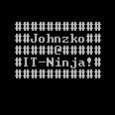REMOVE OFFICE 2010 SILENTLY - Officescrub10 utility
Okay i have tried everything posted here to remove Office 2010 32 bit. I need to get all components of Office 2010 Removed including SharePoint workspace because I can’t install Office 2013 since the SharePoint workspace doesn’t get removed during the standard uninstall of Office 2010. I have already tried the MsiExec.exe /X{90140000-0011-0000-0000-0000000FF1CE} /QN and the msiexec launches and so does the setup.exe bootstrap but Office still remains. I can run the command: C:\Program Files\Common Files\Microsoft Shared\OFFICE14\Office Setup Controller\setup.exe" /uninstall PROPLUSR /dll OSETUP.DLL from the command prompt but still doesn’t remove the SharePoint workspace and it won’t work when you use that command in a uninstall script from the KBox. I DO NOT want to manually uninstall 800 copies of Office 2010. So I’m left with trying to push the Office2010 Scrub Utility to all the 800 PC's and launch the program + Uninstall All Components silently. Any idea how i would push the Officescub10 Utility and execute it with a silent uninstall command
Answers (3)
If you say you had anything try i will bet!
You can try it with PSTools ->
PSExec.exe \\Computername -User Domain\User -p password "Path to for example *.bat"
The batch contains your parameter.
Comments:
-
Yeah but wont i have to copy/install PSTools on all machines? - CEads 11 years ago
-
No you can copy the required Files from Office to a share. Than add the UNC-Pfad to batch/exe/programm. Start PSTools on you machine and declare the computer how you want to start the applikation. - Johnzko 11 years ago
-
Never mind. That wont work on our system because security wont allow us to copy the files to a share AND UNC Paths arnt recognized by the command prompt because of security setting. Don't wont to get a $1 million dollar Fine for the company. Need to find a way to get the officescrub10 utility to install and run silently from the KBOX - CEads 11 years ago
-
Tomorow i work with PSExec again. Than can i give you some more informations and my script. - Johnzko 11 years ago
Look for the config.xml in the ProPlus sub directory of Office 2010 (Office 14)
Edit the values in the first line:
<Display Level="none" CompletionNotice="no" SuppressModal="yes" AcceptEula="yes" /> -->
Save it in its original location on a network share, point your batch file to it with the following command:
net use y: \\ServerName\Share
y:\Office14\setup.exe /uninstall ProPlus /config y:\Office14\ProPlus.WW\config.xml
net use y: /delete
Office14\setup.exe /uninstall ProPlus /config y:\Office14\ProPlus.WW\config.xml
Comments:
-
I tried that path but I receive a error that the silentuninstall.xml cant be found. It is located in the root of the Office folder and i tried it with the xml in the PROPlus folder. What is the (Y:)? Is that your example of a network drive map letter? - CEads 11 years ago
-
Y is network drive letter, you can use any letter, I did not rename but it should not matter. Just ran it on 200 computers last week all office 2010 was un-installed. OrbitLee looks like he got it to work too. - Carlos12ad 11 years ago
-
CEads: Check your path and if any typo's exist. - Carlos12ad 11 years ago
You may have already tried this but I created a silentuninstallconfig.xml
<Configuration Product="Standard">
<Display Level="none" CompletionNotice="no" SuppressModal="yes" AcceptEula="yes" />
<Setting Id="SETUP_REBOOT" Value="Never" />
</Configuration>
which was included in the root of the installation setup.exe along with all source files. The silentuninstallconfig.xml is called by a uninstall batch file with the following command line:
setup.exe /uninstall Standard /config silentuninstallconfig.xml
This did not cover Sharepoint however as we did not have that included in our build.
Comments:
-
The OFFICE OCT wont do the uninstall with the silentuninstall xml. I can do it straight from the command line on the PC but when i add the command to the OCT it never calls so it wont uninstall and the Office 2013 install fails. - CEads 11 years ago




Alternatively, you can build a separate CONFIG.XML specifically for uninstalling it using SETUP.EXE:
http://support.microsoft.com/kb/2612800
It's also probably worth building a separate MSI to run the Groove.EXE command to remove temporary and permanent SPW data (documented in an MS KB) and to remove the actual workspace folders, too. - anonymous_9363 11 years ago